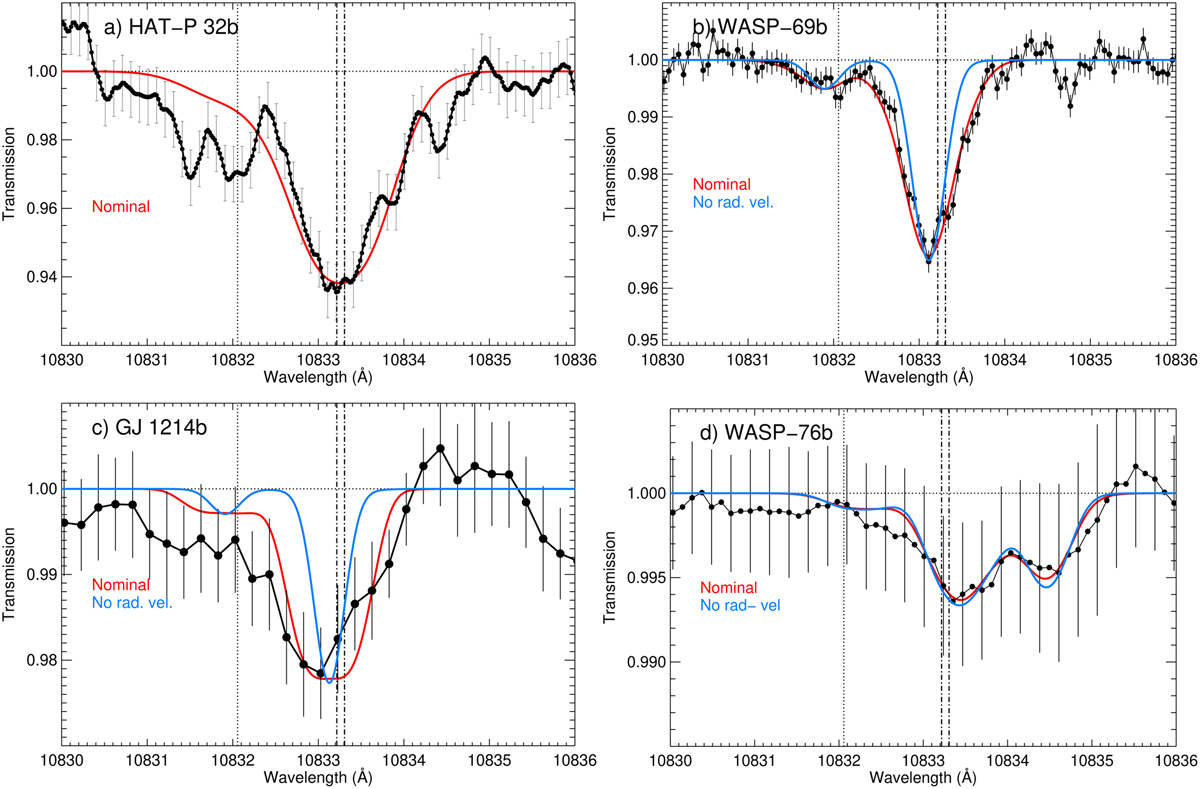Fig. 1

Download original image
Spectral transmission of the He triplet for several planets. For HAT-P-32 b (a), WASP-69 b (b), GJ 1214 b (c), and WASP-76 b (d) (with different y-axis scales). Data points and their respective error bars are shown in black (adapted from Czesla et al. 2022, Nortmann et al. 2018, Orell-Miquel et al. 2022, and Casasayas-Barris et al. 2021, respectively). Wavelengths are given in vacuum. The best-fit simulations are shown with red curves. For HAT-P-32b, the best fit corresponds to a temperature of 12500 K, a mass-loss rate of 1.4 ×1013 g s−1, and a H/He mole-fraction of 99/1; for WASP-69 b, the fit corresponds to a temperature of 5375 K, Ṁ = 1011 g s−1 and H/He = 98/2; for GJ 1214 b, a temperature of 3625 K, Ṁ = 6.3 × 1010 g s−1, and H/He = 98/2; and for WASP-76 b, a temperature of 9500 K, Ṁ = 1.2 × 1012 g s−1, and H/He = 98/2. Other transmission models are shown (in blue) when the gas radial outflow velocity was not included. The positions of the helium lines are given by vertical dotted (weak) and dash-dotted (strong) lines.
Current usage metrics show cumulative count of Article Views (full-text article views including HTML views, PDF and ePub downloads, according to the available data) and Abstracts Views on Vision4Press platform.
Data correspond to usage on the plateform after 2015. The current usage metrics is available 48-96 hours after online publication and is updated daily on week days.
Initial download of the metrics may take a while.


